Qualcomm Snapdragon 888

Qualcomm Snapdragon 888: A Review of the Flagship Processor from 2021 in the Perspective of 2025
April 2025
Introduction
Qualcomm Snapdragon 888, introduced at the end of 2020, became a symbol of the transition to 5G and artificial intelligence in mobile devices. Despite almost five years since its release, smartphones powered by this SoC (System-on-Chip) remain popular due to their balance of performance and energy efficiency. In this article, we will explore what makes the Snapdragon 888 noteworthy today, how it performs in real-world scenarios, and who should pay attention to it.
1. Architecture and Technology Process: Innovations in Miniature
CPU: Three-Cluster Structure
The Snapdragon 888 is built on an 8-core Kryo 680 architecture divided into three clusters:
- 1 Cortex-X1 core (up to 2.84 GHz) — for resource-intensive tasks: gaming, rendering, AI computations.
- 3 Cortex-A78 cores (up to 2.42 GHz) — provide high performance in multitasking.
- 4 Cortex-A55 cores (up to 1.8 GHz) — handle background processes and energy savings.
The overall amount of L2 cache is 1 MB, which speeds up access to frequently used data.
GPU: Adreno 660
The Adreno 660 graphics processor offers 35% higher performance compared to its predecessor (Adreno 650 in Snapdragon 865). It supports:
- Displays with refresh rates up to 144 Hz.
- Real-time ray tracing (relevant for gaming).
- 8K video decoding at 30 FPS and HDR10+.
Technology Process: 5 nm
The chip is manufactured using a 5-nm process (Samsung 5LPE), which has reduced power consumption by 25% compared to 7-nm processors. This is critically important for supporting 5G and ensuring long battery life.
2. Performance: From Gaming to AI
Gaming
- In 2025, the Snapdragon 888 still handles most mobile games at high settings: Genshin Impact — 50-60 FPS, Call of Duty: Mobile — 90 FPS.
- Support for Game Quick Touch technology reduces input lag to 10 ms.
- However, in advanced scenarios (such as rendering 4K graphics), noticeable heating occurs, requiring active cooling.
Multimedia
- Recording and playback of 8K video with HDR.
- Hardware acceleration for Dolby Vision and AV1 codecs.
- The Aqstic audio chip supports 32-bit sound and formats like aptX Adaptive.
Artificial Intelligence
- AI engine Hexagon 780 (6th generation) with performance up to 26 TOPS (trillions of operations per second).
- Enhanced algorithms for photography (autofocus, noise reduction) and voice assistants.
Power Consumption and Heat Dissipation
- TDP is 10W — a moderate figure, but under load (gaming, 5G modem) the chip can consume up to 12-14W.
- In smartphones with passive cooling, throttling (frequency reduction) can occur after 15-20 minutes of intensive use.
3. Built-in Modules: Future Connectivity
Snapdragon X60 Modem
- Supports 5G (mmWave and sub-6 GHz) with peak speeds up to 7.5 Gbps.
- Compatibility with 4G LTE Advanced (Cat 24/22).
Wi-Fi and Bluetooth
- Wi-Fi 6E (up to 3.6 Gbps) with low latency.
- Bluetooth 5.2 supporting aptX Adaptive and LE Audio codecs.
Navigation
- Dual-frequency GNSS (GPS, GLONASS, Galileo, BeiDou) with an accuracy of up to 1 meter.
- Support for Iridium satellite communication systems (emergency calls).
4. Comparison with Competitors
Previous Generation: Snapdragon 865
- CPU performance increase: 25%, GPU: 35%.
- More advanced AI engine (26 TOPS vs 15 TOPS).
Apple A14 Bionic
- Better results in Single-Core (1600+ in Geekbench 6), but lagging in Multi-Core (3200).
- No built-in 5G modem (an external one was used in iPhone 12).
Samsung Exynos 2100
- Similar architecture (Cortex-X1 + A78), but higher heat generation.
- Adreno 660 vs Mali-G78 MP14: Snapdragon wins in gaming optimization.
MediaTek Dimensity 1200
- Cheaper, but weaker in GPU (Mali-G77 MC9) and lacks mmWave 5G support.
5. Use Cases
Gaming
- Ideal for cloud gaming (Xbox Cloud, NVIDIA GeForce NOW) and mobile streaming.
- Devices with active cooling are recommended (for example, ASUS ROG Phone 5).
Everyday Tasks
- Instant app launches, smooth interface operation.
- Energy efficiency: up to 7-8 hours of screen time (with a battery capacity of 4500 mAh).
Photography and Videography
- Support for cameras up to 200 MP and simultaneous recording from three modules.
- AI enhancements: night mode, stabilization, scene recognition.
6. Advantages and Disadvantages
Strengths:
- High performance in gaming and multimedia.
- Full support for 5G and Wi-Fi 6E.
- Energy efficiency for its class.
Weaknesses:
- Heating under prolonged loads.
- In 2025, it lags behind new chips (Snapdragon 8 Gen 3, Dimensity 9300) in AI tasks.
7. Tips for Choosing a Smartphone
- Cooling: Look for models with vapor chambers or heat sinks (Xiaomi Mi 11, OnePlus 9 Pro).
- Battery: At least 4500 mAh for comfortable use.
- Price: New devices with Snapdragon 888 in 2025 range from $400 (e.g., POCO F4) to $700 (flagships from previous years).
8. Final Conclusion: Who is Snapdragon 888 Suitable For?
This processor is an optimal choice for:
- Gamers who value the balance of price and performance.
- 5G enthusiasts in need of a future-proof device.
- Users prioritizing a quality camera.
Despite its age, the Snapdragon 888 remains a worthy option in the mid-range segment, especially if you're not ready to overpay for the top new models of 2025. Its key advantages are stability, proven optimization, and availability across a wide range of devices.
Basic
3x 2.42 GHz – Kryo 680 Gold (Cortex-A78)
4x 1.8 GHz – Kryo 680 Silver (Cortex-A55)
GPU Specifications
Connectivity
Memory Specifications
Miscellaneous
Benchmarks
Phones with Snapdragon 888








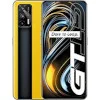



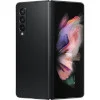





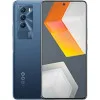


Tablets with Snapdragon 888

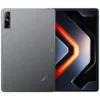
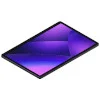

Comparison of Devices with Snapdragon 888
Compared to Other SoC
Share in social media
Or Link To Us
<a href="https://cputronic.com/soc/qualcomm-snapdragon-888" target="_blank">Qualcomm Snapdragon 888</a>